
This article is the second in a two-part series on the future of Marine Corps aviation. To read about how F-35B Joint Strike Fighter testers and operational pilots are preparing for the plane’s first deployment, please click this link.
YUMA, Ariz. – In a glimpse of what the future of Marine Corps aviation could bring, this fall F-35B Joint Strike Fighters were operating at long ranges with the MV-22 Osprey, passing information to other aircraft and to ground forces with tablets. Unmanned aerial vehicles provided intelligence, and precision rockets hit targets in dense urban areas.
At Marine Aviation Weapons and Tactics Squadron-One (MAWTS-1) and its semi-annual Weapons and Tactics Instructor (WTI) course, top aviators from around the fleet not only trained to high-end warfighting scenarios but also help advance tactics to keep up with real-world developments and conduct experiments with emerging technologies that could give Marines in the air and on the ground an edge on the battlefield.
Evolving F-35B Tactics
Even as operational testers are working out the specifics of how to operate the F-35 onboard an amphibious ship, MAWTS-1 has already fully integrated the Joint Strike Fighter into its anti-air warfare, air-to-ground support, Marine Expeditionary Unit operations and other missions. MAWTS-1 Commanding Officer Col. James Wellons told USNI News in a Nov. 1 interview that the F-35B has been flying in support of the train-the-trainers WTI courses for several years and, as of the fall course that wrapped up on Oct. 22, is “fully integrated in either a supporting role or a leading role in almost every evolution that we do.”
“In some cases the F-35’s fighter capabilities are used – we have a couple of anti-air warfare missions we fly where the F-35 plays a prominent role in terms of not only its fighter capabilities as a missile shooter but also its command and control capabilities in terms of the situational awareness the F-35 provides to the other players who are out there. The F-35 is able to act as a quarterback basically for the other fighters out there, so because of their unbelievable situational awareness even if they don’t have the missile to shoot at a given time they can provide the asset that does have the capability to shoot with the weapons information that it needs,” he said.
“As an air-to-ground platform, as a close-air support weapon or as an airplane that can go out and do armed reconnaissance and coordination, we have also fully integrated the F-35 and we operate it in a similar fashion to the way we operate the legacy fourth-generation platforms, the F-18s and the Harriers. … Also as a sort of an airborne command and control platform, the F-35, just like it does in the air-to-air fight, it can also play a role, help detect and identify potential surface-to-air threats that are out there and share that information with ground forces and other players out there on the battlefield.”
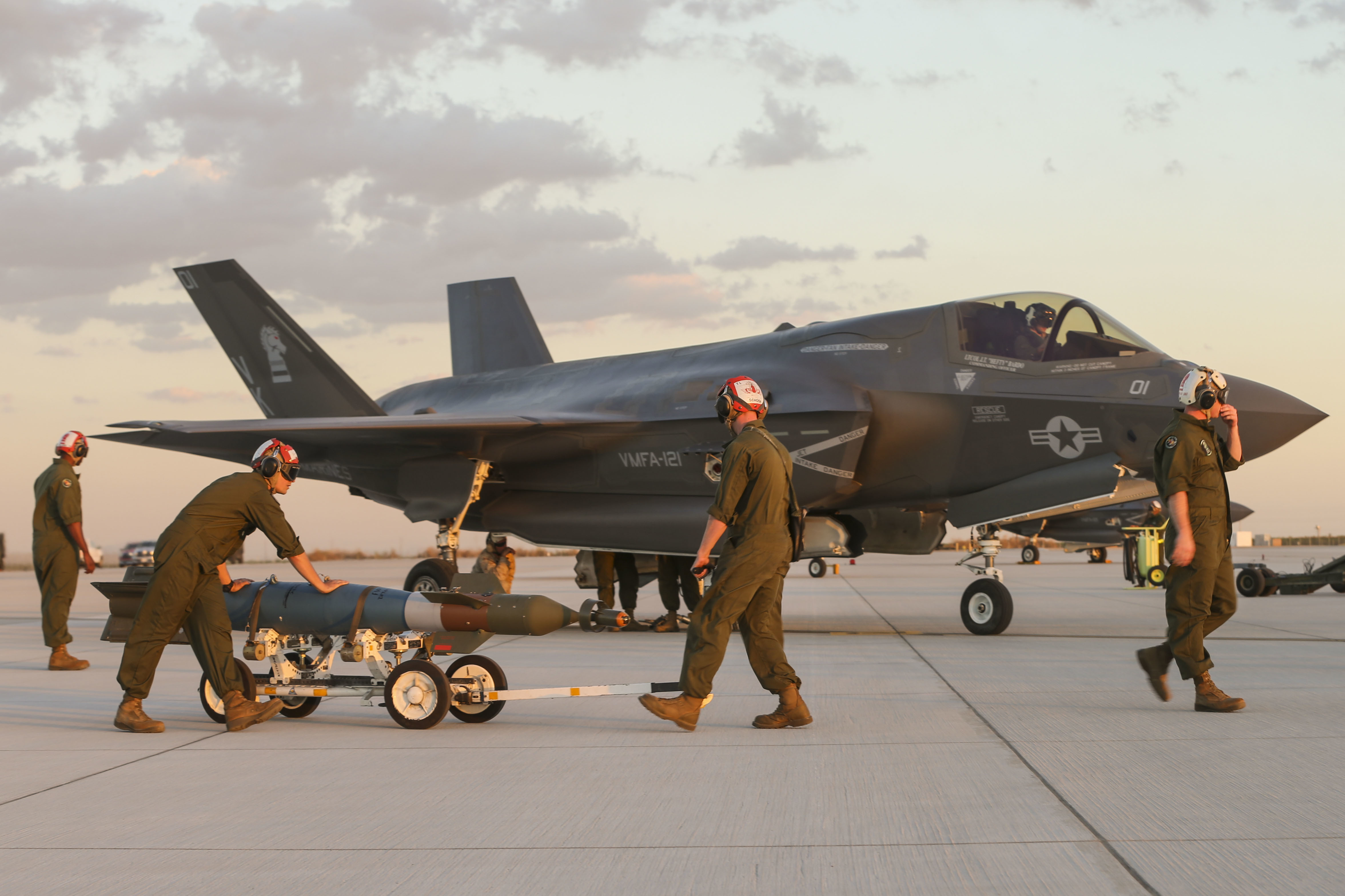
MAWTS-1 graduated three F-35B WTIs in the spring 2016 course and a fourth one during this most recent course. Wellons said the Marine Corps is the first service to graduate an F-35 pilot from its weapons school, and the Joint Strike Fighter presence in future WTI courses would grow as the number of operational squadrons increase – with the goal being to graduate one WTI per operational squadron each year.
In the process of incorporating F-35 first to support other aircraft and now with F-35 pilots as students, MAWTS-1 has drastically changed how it employs the new airplane and learned a lot about how operational squadrons can get the most out of this multi-mission system.
“I think when we first brought in the F-35 we sort of viewed it as a fourth-generation platform on steroids that was low-observable. So we sort of tried to put the F-35, which is really a completely new weapon system, into almost the square peg of a fourth-generation platform,” Wellons said.
“And we’ve grown over the time that we’ve had the F-35 to gain a much greater appreciation – it would be a tremendous waste to see the F-35 as just a low-observable Hornet, because the reality is the F-35 brings tremendous electronic warfare capability, situational awareness, increased lethality in a myriad of different ways. I mentioned the quarterback piece with the fighter threat earlier – to put the F-35 out there as a missile truck basically and have it go down range and take out the air threat and then leave, you’re missing out on the opportunity that the other players, the other platforms are going to get to gain the situational awareness that that F-35 has.”
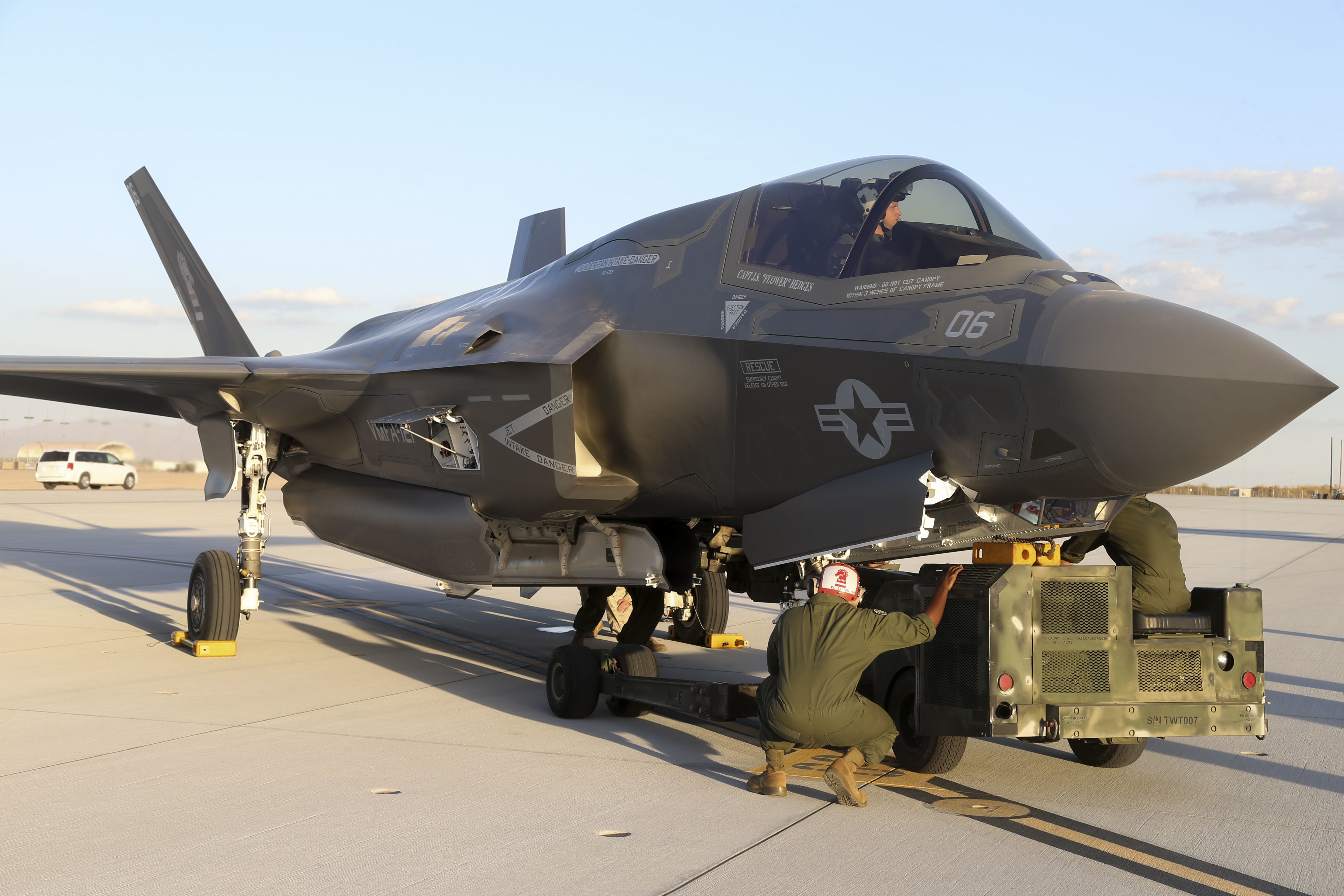
Wellons said MAWTS-1 worked on a fighter integration initiative to better couple the fourth- and fifth-generation airplanes and maximize the capabilities they both bring to the fight. As a result, in the fall course the F-35 stayed airborne much longer than it had previously to scan the battlefield, share information, help with command and control and more. The plane can be air-refueled when a tanker was available or land briefly for a hot refuel on ground if needed before taking off again, giving this plane – along with its V-22 counterpart – nearly limitless range.
MAWTS-1 includes a Marine Expeditionary Unit exercise in the course, which combines JSF, V-22, AV-8B Harriers and AH-1 helicopters – all the aircraft that a MEU’s air combat element could bring along on a deployment – into a single mission. In this scenario, the F-35 detected a radar surface-to-air threat and destroyed it so the rest of the MEU could continue with its mission of projecting Marines ashore, Wellons said, showing off the capability that will be used when the first two F-35 squadrons deploy with a MEU aboard amphibious ships in 2018.
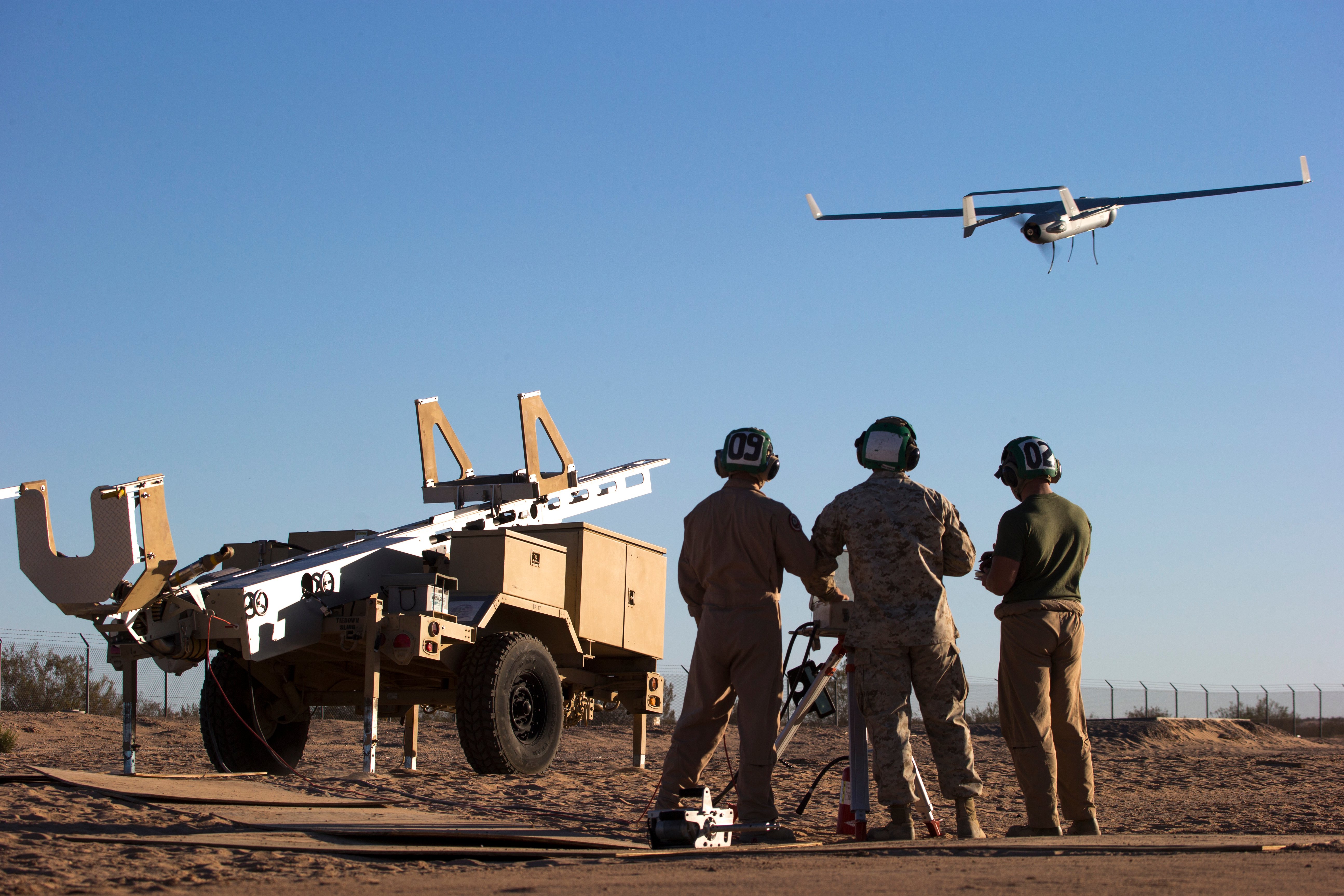
Innovating for the Future Fight
Wellons said a future area of exploration with F-35 would be communications: “how does the ground force and how do the other airborne assets get access to the information that the F-35 has. Communications via radio communication, some other means whether it’s data link or some sort of digital means – that’s one area we continue to explore.”
As a starting point, during the fall course about 100 Samsung tablets, dubbed the Marine Air-Ground Tablet (MAGtabs), were given to air crews and ground troops flying in the back of aircraft.
“Using that tool we’re able to share in a digital way – in the way that you would with your iPhone if you had access to a hotspot – we’re able to share the location of friendly forces, we’re able to use text to share information in a digital way that normally you would have to get on a radio and transmit,” he said.
“We’re able to update in real time situation updates using that tool. And so those are the types of lessons that we’re able to share with the fleet that I think are probably going to be very beneficial to the fleet as they prepare to do their first (F-35) deployment.”
The MAWTS-1 WTI course is unique in that, in addition to “training the trainers” by graduating weapons and tactics instructors, the 21-day live flight portion of the class creates a Marine Expeditionary Brigade-level exercise that creates a perfect testbed for innovation, Wellons said.
“We have a live maneuver force of somewhere in the neighborhood of a thousand Marines, an infantry battalion and all the warfighting capability that that type of unit brings. And we incorporate that with our ACE, our air combat element, in a way that makes it representative of a Marine Expeditionary Brigade – not as many ground forces as you would have but we’re able to really operate at that level,” he said, with those ground forces conducting service-level training ahead of deployments and coming with their own sets of training objectives that have to be incorporated into the event.
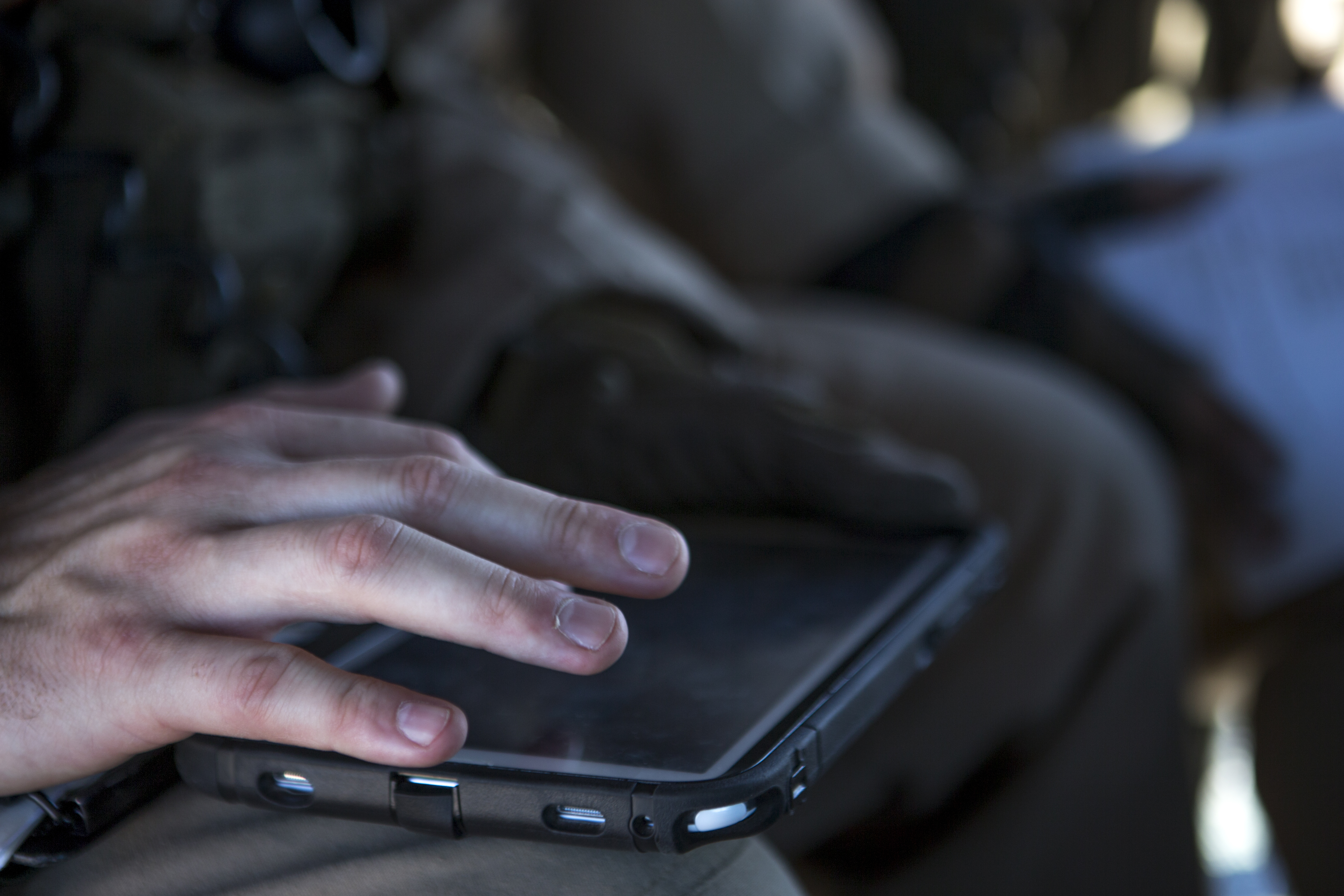
With a thousand infantry Marines and 80-plus aircraft together in the desert, “this is a tremendous venue to test out new technology and new techniques, and we want to take full advantage of that, so we take input from around the fleet to determine what are the things worth spending time on.”
In the fall they tested the Advanced Precision Kill Weapon System and a loudspeaker for Hueys to use in information operations in an urban environment, and in the past a leaflet-dropping system was tested on Harriers and C-130s for a similar mission.
Wellons said the WTIs that graduate stay in touch with MAWTS-1 and with one another, creating a feedback loop that helps keep the MAWTS-1 training scenarios realistic and reflecting the cutting-edge developments that adversaries around the globe are employing. The course has kept pace with cyber and electronic warfare developments and stresses the students to both employ and defend against spectrum capabilities, Wellons said. But he sees naval integration and unmanned systems as two areas for growth in the future.
Located in the middle of the Sonoran Desert and about 180 miles from Naval Base San Diego, naval integration is a challenge.
“We’re not going to be able to pull up an Aegis cruiser here to the city of Yuma any time soon, but I think we can do more to work with our naval counterparts to potentially simulate a naval environment here, and maybe incorporate things like … naval command and control capabilities that we would see aboard a ship – figure out a way here in the desert where we can simulate the type of thing you would have on an amphibious platform like the USS America, so that we can test out what would our airplanes have at their disposal to work the command and control piece” in lieu of relying on ground-based systems like Marine Air Command and Control system assets, Wellons said.
“I would like to do more of that. We’re working to do more of that. We’ve included TACRON, the tactical control squadrons from the Navy, particularly in the MEU [exercise] mission I mentioned earlier, and I think we’ll continue to expand those relationships going forward.”
On unmanned systems, MAWTS-1 currently uses the RQ-7 Shadow and will eventually phase that out and use the RQ-21 instead.
“We need persistent [intelligence, surveillance and reconnaissance] and also communications capability that that asset is going to bring, and I think that will be another area of growth in terms of how we use not just the RQ-21 but how we integrate that with other unmanned platforms.”
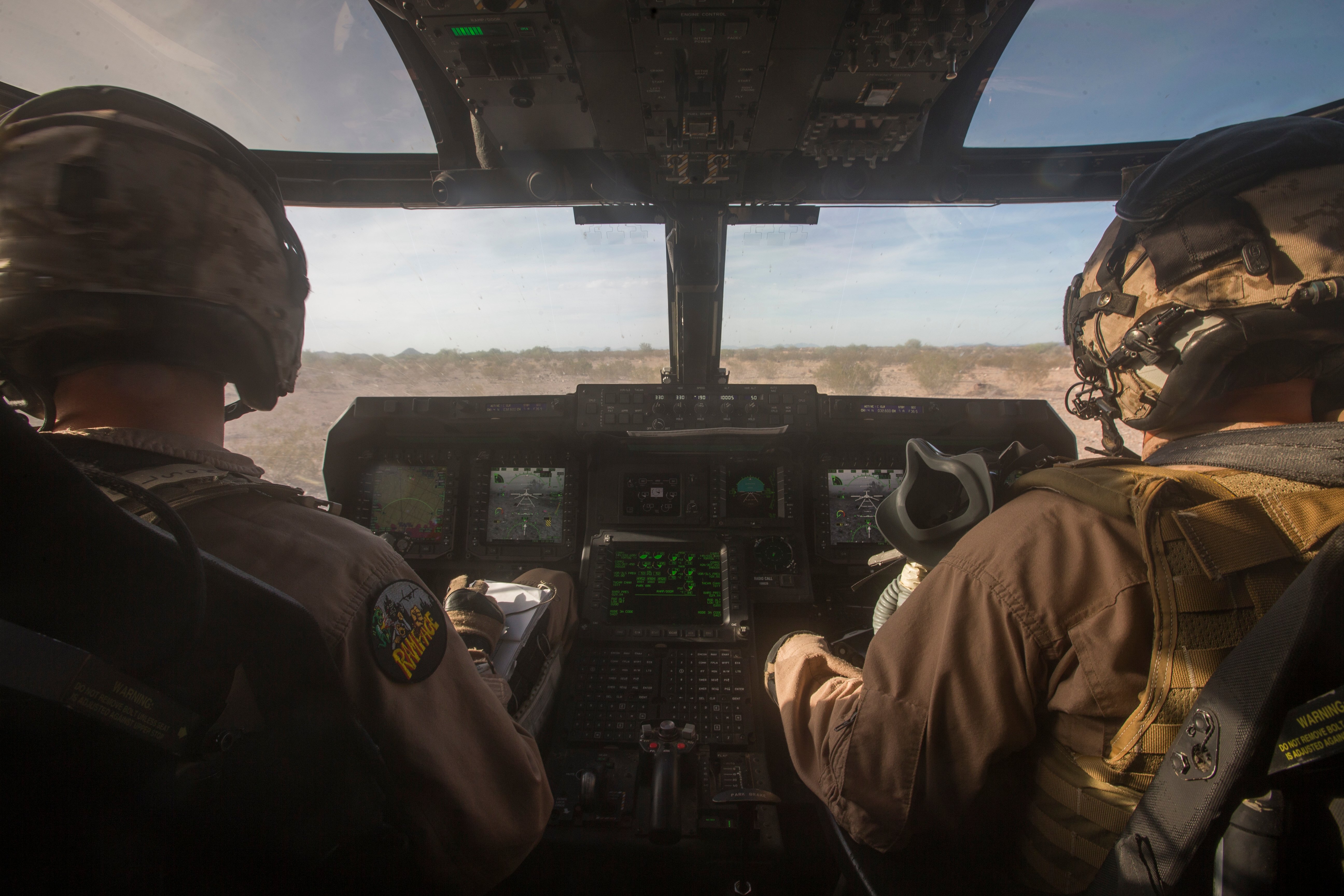
MAWTS-1’s Role
MAWTS-1 has about 210 year-round personnel and graduated 236 WTIs during the last session. The seven-week course begins with an academic phase, where students begin with general air and ground combat and risk mitigation lessons and then move into more and more specialized training for their specific platform. In the second half of the course, the flight phase begins with the students planning and executing missions first for their platform alone and then into fixed-wing or rotary-wing groups and then the entire air element. The course culminates with a final exercise, after which the students graduate and go back to their squadrons as subject matter experts, bringing with them the tactical best practices they learned.
The MAWTS-1 staff remains in Yuma after each course, going through a hot wash of each exercise that took place and discussing how to apply lessons learned to future WTI courses and to fleet operations. Wellons said MAWTS-1 communicates lessons learned directly with MEU commanders and others in the fleet, as well as updates publications and more to formally shape future operations based on lessons learned at WTI course.
“We are able to rapidly innovate tactics, techniques to try to achieve mission success without a whole lot of outside direction, if you will, so it’s really one of the great things about MAWTS-1: the fact that, first of all, we have the talent here – every one of these instructors is hand-picked and selected as the best of their respective communities – and because we have that talent here, that gives us the ability to rapidly innovate and develop new techniques and tactics to address the emerging threats that are out there and also take full advantage of the emerging capabilities that we have in things like the F-35 and other assets,” he said.
MAWTS-1 has no aircraft of its own but instead relies on the squadrons sending their pilots to also send maintainers, corpsmen and others to support the massive MEB-level operation. In the end, as many as 3,500 Marines come together twice a year, creating a learning and innovating environment for not just the students but for all who participate.
MAWTS-1 also travels around the globe to certify Marines as various kinds of instructors – night systems instructors, for example. Those travels provide additional opportunities to hear directly from Marines in the fight to understand what the current battlefield looks like and how MAWTS-1 can shape future WTI courses to be representative of what aviators will face in future deployments.





